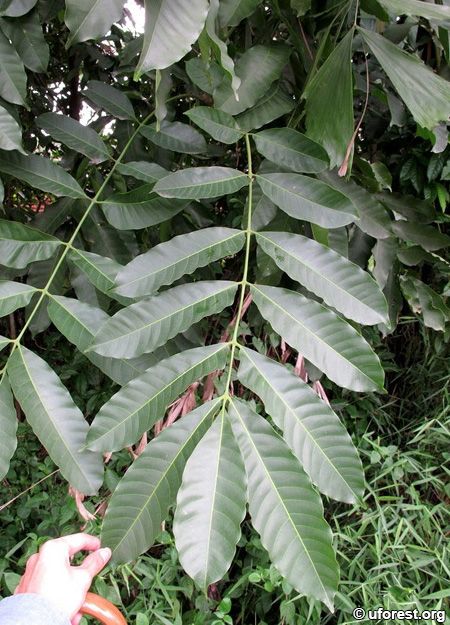| Etymology | Genus | Unknown |
|---|---|---|
| Species | Many spikes, referring to its inflorescence | |
| Family | Meliaceae | |
| Synonyms | Aglaia polystachya Wall. | |
| Common Names | Pithraj Tree | |
| Status | Native: Endangered | |
| Form | Tree | |
| Native Distribution | Tropical China, India, New Guinea, Indochina, Malesia | |
Diagnostics:
Aphanamixis polystachya is a very common tree found on forest edges of abandoned plantations. As a native tree, it is also found within our secondary and primary forests. It can be easily identified from its imparipinnate leaves, with each leaflet being asymmetrical and wavy on the margins, together with an acute tip.
Interesting Facts:
The Pithraj Tree is said to be popular in traditional Indian medicine, like like Ayurveda, Sidha and Homeopathy (Ashish et al., 2017). Various plant parts like the bark, leaves and seeds are used for treatment in ulcers, liver and spleen problems, rheumatism, skin diseases and diabetes, just to name a few.

A small tree growing at Punggol forest.

imparipinnate leaf, with a leaf at the tip.

Wavy margins and asymmetric leaflet.

Plantain Squirrel feeding on the fruits.

Red fleshy pulps revealed in the fruit.
References
Ashish M, Mahammad S & BK Hedge (2017) Therapeutic Uses of Alphanamixix polystachya: A Review. International Journal of Pharma And Chemical Research, 3(2): 114-144.
Author: Siyang
Posted: 2019-07-18 / Modified: 2019-07-19